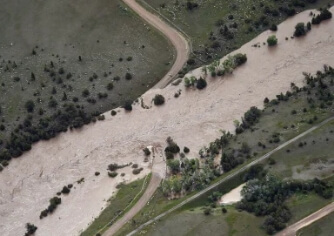
Oil prices marginally fell Thursday as fuel inventories in the world’s largest oil producer rose significantly, amid expectations of higher winter fuel demand.
Oil dips
Brent Crude Futures Fell 5 cents, or 0.07%, to $76.11 a barrel by 10:48 am AST Arabia, while US West Texas Intermediate (WTI) crude futures fell 3 cents, or 0.04%, to $73.29. Both prices were down around 0.1% from the previous session.
Both Benchmarks fell more than 1% Wednesday as a Stronger Dollar, and the bigger-than-expected rise in US fuel stockpiles weighed on prices.
Gasoline stocks in the US increased by 6.3 million barrels last week, reaching 237.7 million barrels, according to data by the US Energy Information Administration (EIA) on Wednesday. Analysts surveyed by Reuters had expected a 1.5 million-barrel rise.
Distillate stockpiles also grew by 6.1 million barrels to 128.9 million barrels, surpassing expectations of a 600,000-barrel increase. But crude inventories fell by 959,000 barrels in the week, compared with analysts’ expectations for a 184,000-barrel draw.
“Increased US fuel inventories prompted some selling, but the downside is limited due to the winter demand season in the northern hemisphere,” Hiroyuki Kikukawa, president of NS Trading, a unit of Nissan Securities, told Reuters.
On the other hand, JPMorgan analysts expect oil demand for January to expand by 1.4 million barrels per day (bpd) year-on-year to 101.4 million bpd, primarily driven by higher usage of heating fuels in the Northern Hemisphere.
“Global Oil Demand is expected to remain strong throughout January, fueled by colder-than-normal winter conditions that are boosting heating fuel consumption, as well as an earlier onset of travel activities in China for the Lunar New Year holidays,” the analysts said.
Despite falling prices, the market structure in Brent futures suggests traders are growing more concerned about supply tightening as demand increases.
Surprising fact
On Wednesday, the premium of the first-month Brent contract over the six-month contract reached its widest level since August, according to Reuters. A widening backwardation, where futures for immediate delivery are higher than those for later delivery, typically signals either a decline in supply or an increase in demand.
Outlook
Analysts expect a Drop In Oil Prices this year compared with 2024 due to production increases from non-OPEC countries.
BMI, a division of Fitch Group, said that it holds its forecast for Brent crude to average $76 per barrel in 2025, down from an average of $80 a barrel in 2024, according to Reuters. It added that the forecast is led by the fundamental data forecast, which points to an oversupply this year, with supply growth outstripping rise in demand by 485,000 bpd.
Kikukawa of Nissan Securities stated that key factors to watch include China’s Demand Trends, the incoming US administration’s energy and trade policies, and its stance on the Russia-Ukraine war. He also noted that traders are likely to hold off on large positions until President-elect Donald Trump takes office on January 20.












